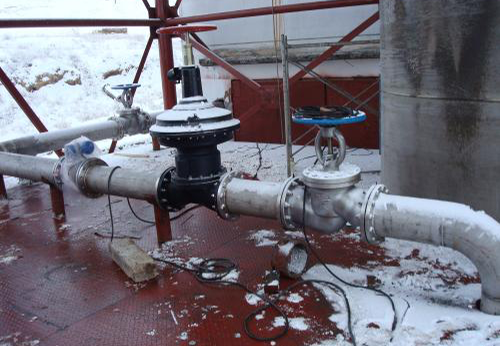Reasons for corrosion of sealing surface of globe valve in seawater process
Posted by Bundor valve
There are many reasons for corrosion of the sealing surface of the globe valve,for example, cavitation, fluid erosion containing impurities, insufficient hardness of valve disc and valve seat materials, poor medium corrosion resistance of materials used, manufacturing process of valves not meeting design requirements, galvanic corrosion, crevice corrosion, oxygen concentration difference corrosion, etc.

When the sealing surface of the globe valve is in the following two working conditions, corrosion is most likely to occur:The first state is that when the globe valve is at a small opening, the seawater flows fast, causing turbulence corrosion and cavitation corrosion;The second state is that when the globe valve is in the fully closed position,the sealing surfaces are narrow at this time, the joint part of the valve clack and the valve body sealing surface is a line at this time, and there is a certain gap between the two sealing surfaces. After a long time of seawater immersion, the seawater medium is in a stagnant state, causing the gap corrosion of the metal in the gap.When crevice corrosion intensifies, internal leakage will occur between valve sealing surfaces.As the flow speed of seawater through the gap is too fast, the seawater with bubbles impacts the sealing surface at a high speed, and bubbles generate and collapse near the sealing surface, turbulence corrosion and cavitation corrosion will occur, further accelerating the corrosion of the valve sealing surface, and eventually leading to the complete failure of the valve sealing surface.
Combined with the above corrosion process and the analysis of the corrosion of the valve sealing surface at the seawater outlet of the natural gas cooler,it is concluded that the main causes of failure are cavitation corrosion and turbulence erosion corrosion of seawater containing impurities.

When the sealing surface of the globe valve is in the following two working conditions, corrosion is most likely to occur:The first state is that when the globe valve is at a small opening, the seawater flows fast, causing turbulence corrosion and cavitation corrosion;The second state is that when the globe valve is in the fully closed position,the sealing surfaces are narrow at this time, the joint part of the valve clack and the valve body sealing surface is a line at this time, and there is a certain gap between the two sealing surfaces. After a long time of seawater immersion, the seawater medium is in a stagnant state, causing the gap corrosion of the metal in the gap.When crevice corrosion intensifies, internal leakage will occur between valve sealing surfaces.As the flow speed of seawater through the gap is too fast, the seawater with bubbles impacts the sealing surface at a high speed, and bubbles generate and collapse near the sealing surface, turbulence corrosion and cavitation corrosion will occur, further accelerating the corrosion of the valve sealing surface, and eventually leading to the complete failure of the valve sealing surface.
Combined with the above corrosion process and the analysis of the corrosion of the valve sealing surface at the seawater outlet of the natural gas cooler,it is concluded that the main causes of failure are cavitation corrosion and turbulence erosion corrosion of seawater containing impurities.
 简体中文
简体中文 Русский
Русский Español
Español Bundor - Butterfly, Gate, Check, Ball, Globe Valve Manufacturer, Supplier & Distributor
Bundor - Butterfly, Gate, Check, Ball, Globe Valve Manufacturer, Supplier & Distributor
